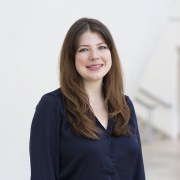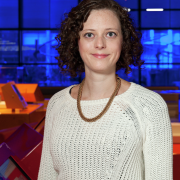Using performing arts in scientific organisations
Performance is being used across scientific organisations in many exciting ways, with aims ranging from attempting to bring science to life, engaging new audiences, deepening understanding of key content to inviting in artists to open up collections in new and innovative ways.
But what do visitors actually ‘get’ from these experiences? What are the successes and challenges of doing this? How can organisations create, deliver and understand the effect of performance pieces in their organisations? How far can performance push scientific organisations to work differently and engage in new ways with new audiences? Is the museum the place to host these events? Does it change the visitor perception of the hosting institution?
In this session, after introductions we will split attendees into five groups and offer an opportunity for discussion.
Session speakers
Senior Scientist, Collection and Exhibition manager
Naturama has a Science Theater where they tell science and natural history based stories . They produce these performances to help visitors to gain new knowledge as well as experience something that they would not expect from a natural history museum.Thomas will discuss the outcomes can you expect from the audience to a performance piece, educational and emotional. He will also raise the question about how closely a performance can and should they align with the science messages of an organisation?
Head of Department of International Cooperation
Lale has been involved in numerous projects with schools and other organisations around understanding science through creativity and performative arts. He has brought together professional artists and researchers, assisting their communication of complex stories and narratives from science in the art+science program events since 2015. He will talk about the potential benefits/pitfalls of cross collaboration. What is the benefit for the scientists and artists taking part? Could something described as art be moderated by scientists?
Marina programs theatre, dance, debates and artistic residences both inside and outside the Quai des Savoirs building. These programs are primarily designed to reach new audiences but also to find ways to discuss controversial subjects. She will discuss who comes performances in scientific organisations? Do these events bring in new audiences or the usual suspects? Should they be taken out of a scientific organisation and why?
NHM are hosted a play about Darwin’s early life and his voyage on the Beagle. The play has not been designed primarily as an educational tool but as a cultural experience, however it was felt important to ensure accuracy of the content. When designing evaluation, this led us to several questions; how should we adapt our evaluation methods to evaluate the outcome of performances? Do the audience expect scientific accuracy from a dramatic production? Do they care?
Contemporary Science Events Project Leader
Science Museum have hosted several interpretative dance and music performances related to different themes and exhibitions which raised questions about the role played by these art forms and the museum audience.? Is the museum the place to host these events? Does it change the visitor perception of the institution? What are the benefits and pitfalls for the organisation?





